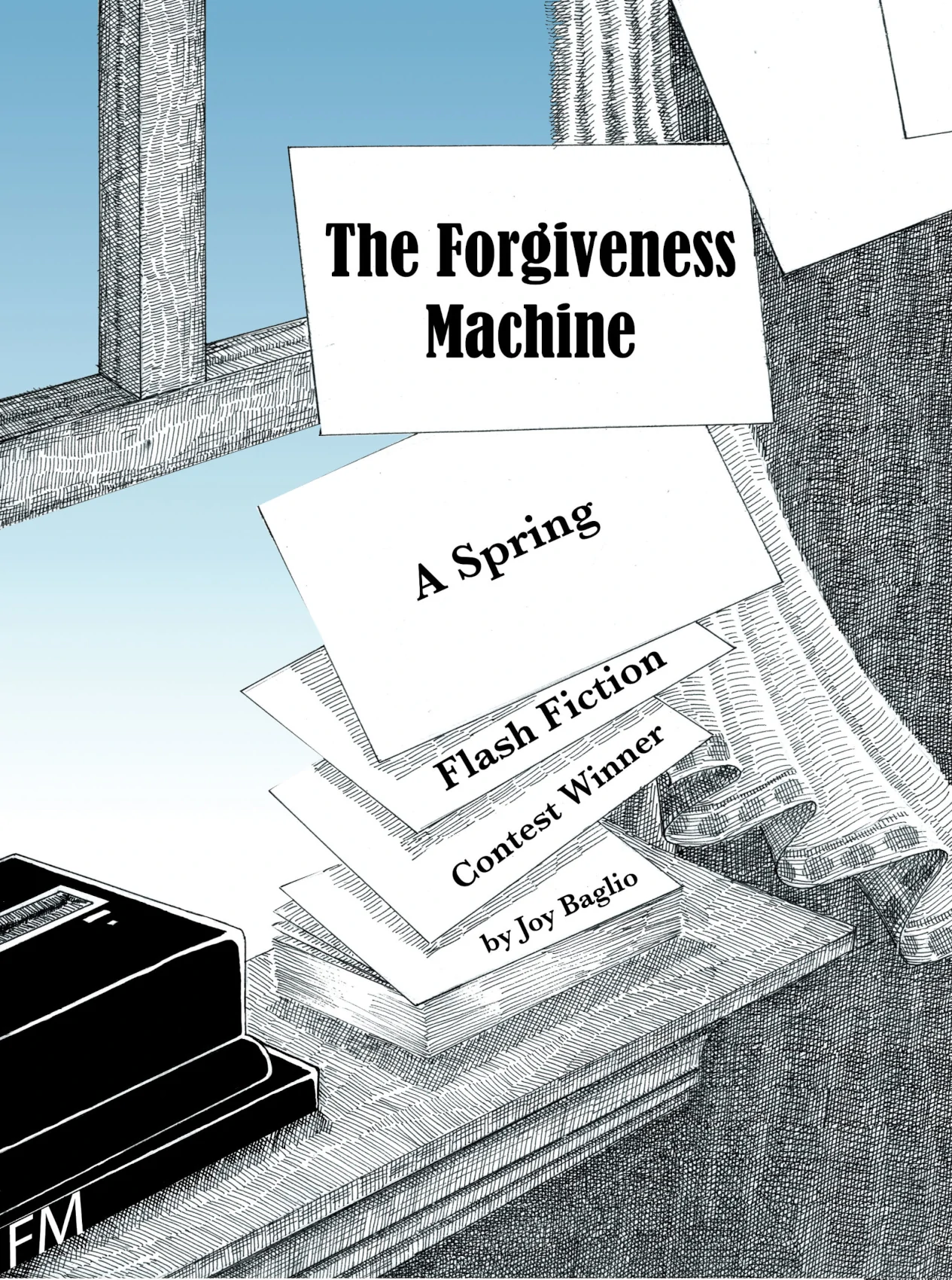
The Forgiveness Machine
Words By Joy Baglio, Art By Brian Demers
The forgiveness machine arrives in a box with bubble wrap. It’s small, sleek, and Pam sets it on the table. She’s already written each item she’ll forgive on blank two by four inch flash cards, in black ink, as stated in the directions, and she stands admiring the machine that will change her life, tracing her fingers over its lunar contours.
She will forgive everything: The petty judgments of the women in her office. The film student she thought she loved, who danced with her whole family under the graduation tent last year yet slipped away in the directionless, post-college urban landscape of their twenties. The artist she almost married who left her for a gymnast with unshaven legs (whom she’ll also forgive). Her first love, who broke up with her on a long-distance phone call when she was visiting her father—“I can’t string you along anymore,” he’d said, as though he were doing her some great act of justice. And of course her father himself, who had moved cross-country when she was a child. She’ll forgive her mother her weariness and the string of men she had loved, briefly, whom Pam had hated for no other reason than their vague threat to what had seemed the immutable bubble of her childhood. She’ll forgive the grudges she’s borne like Sisyphean boulders. The years of self-sabotage, self-doubt. She’ll forgive it all. Her mind will broaden, lighten.
But her hand hesitates. She’ll wait until after lunch, she thinks. That feels right. Though after lunch, she decides to wait until bed. At 11pm, she is so tired, and she eyes the forgiveness machine on the table and thinks tomorrow will be best.
The next day, Pam moves the machine to the mantel. She waits days, then weeks. She forgets about it in the fluttery excitement of new romance. Months later, when the spark fizzles to a one-sided ache, she wants nothing but to steep in her own pain.
A year later, she’s married. The next, she has her first child, a boy. Two years later, her second, a girl. Year five: She moves for him, packs up her life for her husband, switches houses, daycares, dentists. The forgiveness machine is lost in garages, forgotten in boxes, stored in an attic in one house they rented for just four months, then unpacked, shoved under a bed, dormant and dusty next to stacks of old love letters.
When her husband leaves her, she catalogues the betrayal on a blank flash card. She makes cards when her best friend becomes distant, when her college freshman son blames her for the divorce, when her daughter takes her own life. It’s then that she sits by the machine, trembling, hating it for its promise. She waits longer. She’ll wait until she wants lightness, wants wholeness, wants to abandon the familiar heaviness that, right now, is a blanket she wraps herself in for warmth.
She makes more cards, adds them to the stacks of forgivable things, an ever accruing repository. Sometimes, they topple and fall under their own weight, their unforgiven secrets splayed wide.
Maybe she’ll wait her whole life, until in the dimness of old age, the sun glinting off dust motes, reflecting off the metallic exterior of the forgiveness machine where it sits on a windowsill, more for aesthetics than anything, she’ll laugh at the strange device she’s had forever, carted around like it could save her, the piles of lists, that, when she flips through them, she hardly remembers. It’s then that, just for the hell of it, she picks a card from the pile, feeds it into the machine, listens to the silvery whir of absolution.
